Digging Into Halloween’s Rich History, This West Virginia Morning
Halloween is more popular than ever. We speak with WVU religious studies professors to learn more about the holiday's rich history.
Continue Reading Take Me to More News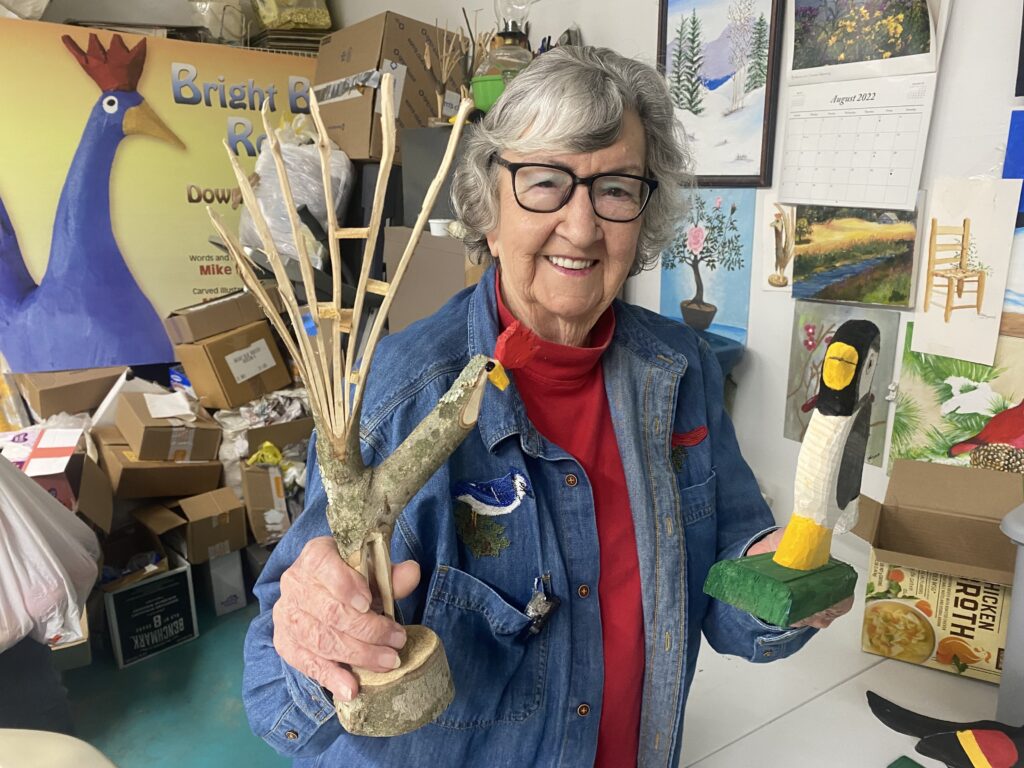
Appalachian Folk Art cuts to the heart of Appalachian life.
Some call it primitive, but perhaps it’s better to call folk art “unpretentious.” People call 89-year-old Minnie Adkins the Matriarch of Appalachian Folk Art. She says she’s just a whittler.
Born in the midst of the Great Depression, Minnie grew up a farm girl. Her father also ran a sawmill and dug coal out of a tunnel on a nearby hillside. For extra money, he made ax handles and homemade sleds. Minnie said there was a lot of whittling to it. When her father saw she was intrigued with a mostly young boy’s pastime, he gave his daughter a pocket knife. That helped begin a prelude to folk art history.
The Eastern Kentucky woodcarver recently sat down over a bowl of homemade soup and talked about blue roosters, children’s books and fighting poverty with art.
“I loved whittling as a child and I made toys for myself,” Minnie said “I made slingshots and bow and arrows and a little paw paw whistle and all kinds of stuff to play with.”
Minnie’s whittling creativity expanded as she grew up. But she went back to the slingshot – and saw something more hidden within the y-shaped branch.
“I was making a sling shot and you know how the prongs go like that and the handle like that,” Minnie said. “I thought that well, if that had a tail and a head on it, that could be a rooster with a pair of legs. And I tried it and it turned out good. And from then on I kept making roosters.”
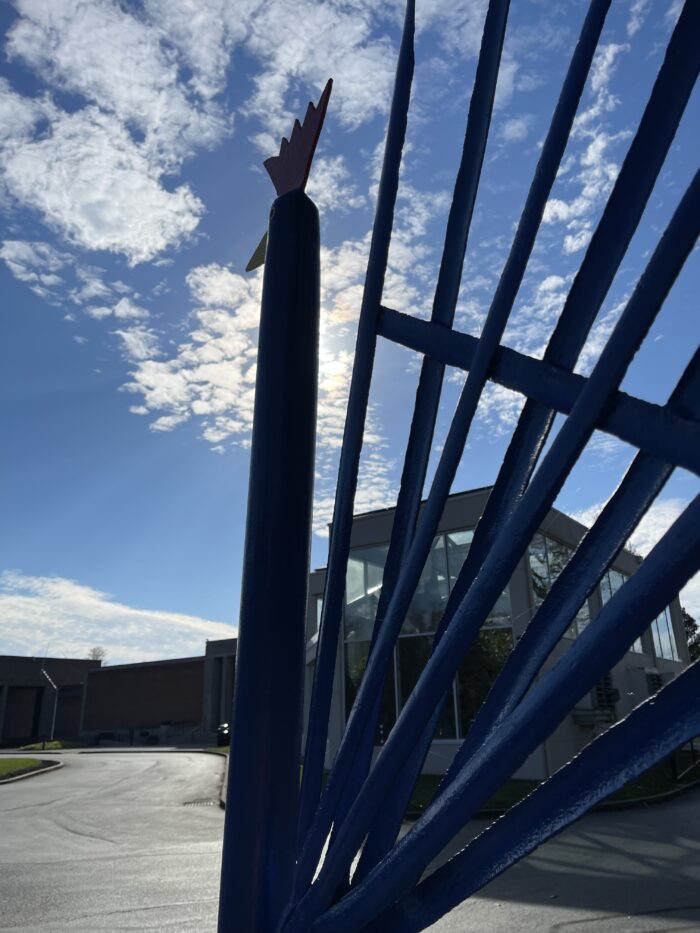
Minnie continued to whittle her roosters, (soon to be painted blue and become her signature piece), along with various birds and other hand-sized creatures. She would give the pieces away or sell them for a meager price. Her avocation graduated to something more when she and her husband Garland took some of her carved creations to a mecca of Appalachian Folk Art, the gallery at Morehead State University.
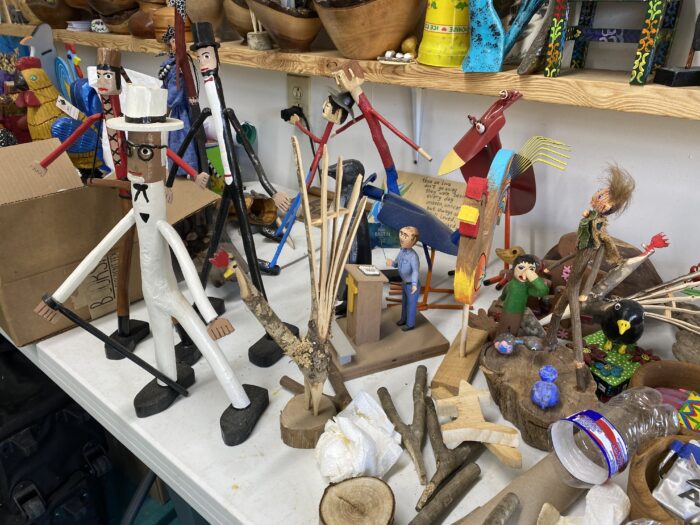
“I sold about three pieces: a cow, horse and something else for $35,” Minnie said. “After that, me and Garland would go down there to the art department, and when we’d drive in, a whole bunch of workers would come out, and we’d sell our stuff on the hood of the truck, and they’d buy everything we took. They’d hurry out there to see which one could get there first.”
Soon after, a new-found friend and art vendor would come to Minnie’s Elliott County, Kentucky home once a month and pick up what she and Garland had made. She said he’d take it all down south and sell it to art galleries and such. When Minnie’s work was featured in a big coffee table book called “Appalachian Artists of the Southern Mountains” her avocation turned into vocation – and a star was born.
“After that book came out, people began to hunt for me and Garland from all over the country,” Minnie said.
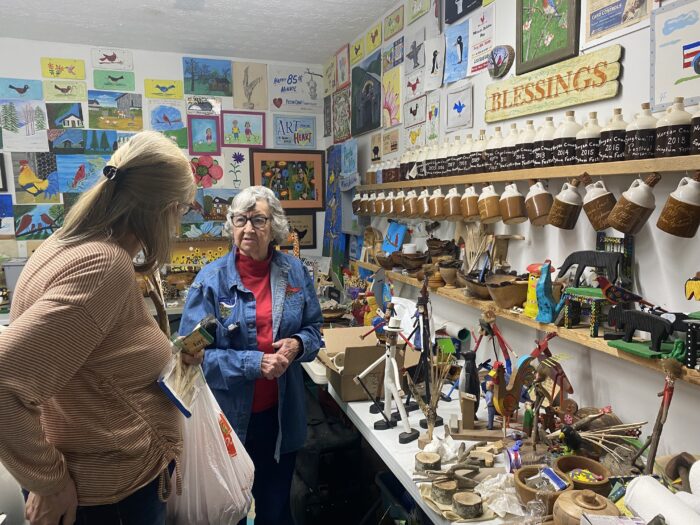
Minnie and Garland lived in one of the poorest counties in eastern Kentucky. Elliott County had no major highway, not one railroad track – not even a stop light. She took it upon herself to get some of her friends and neighbors whittling and painting.
“When Garland was alive, Randy, you remember coming down here, we had 15 folk artists making folk art and making a living at it,” Minnie said. “They’re all gone but me and Tommy and Jimmy Lewis. They’ve not been at it long as I have, but they’ve got a reputation with their folk art too.”
What does the Russian ballet have to do with this Appalachian tale? In 1992, at Kentucky’s Centre College, a multicultural hub, Soviet ballet dancer Mikhail Baryshnikov was giving master classes and performing at Centre’s Norton Center for the Arts. Minnie was invited that celebratory weekend to receive the first Norton Center award for achievement in the arts in Kentucky.
Centre College Communications Director, musician and children books author Mike Norris was asked to squire Minnie Adkins around for the event.
“Within about five minutes, I felt like I’ve known her all my life,” Mike said. “She told me later, she felt the same way about me. She’s probably the most generous person I’ve ever met. She was wearing these little wooden carved animals. She had made foxes, bear, she brought a bunch of them with her and somebody would praise one. And she said, ‘Well, here honey, just take it with you.’ And she’d take it off her neck and give it to them.”
Mike said Minnie gave him a whittled blue guitar about 12 inches tall since she had heard he played guitar. As a thanks, Mike sent her a cassette tape that he had recorded with the Raggedy Robins String Band.
One song’s opening line went like this; “A bright blue rooster and a three legged hog, a wore out tractor and a no-count dog.”
“She called me up about a week later,” Mike said. “And she said, ‘Well, I wish you hadn’t given me that tape.’ And I said why? And she said ‘it’s got that song on it about the bright blue rooster and I can’t quit thinking about it and it’s aggravating.’ And I said well just lay down to rest and maybe you’ll feel better when you get up.”
Mike said Minnie didn’t rest but went to work, and a week later he got a big box in the mail.
“There was this beautiful 14-inch-tall blue rooster that she had carved with his beautiful plume tail,” Mike said. “Just giving it to me out of the goodness of her heart, maybe to get it out of her head. And I set it up on my mantel and then I couldn’t quit thinking about it every time I’d walk by. About a week later, I called her back and I said ‘Many of my songs got the bright blue rooster, the three legged hog, the wore out tractor, the no count dog. If you’d carve all the figures in the book, I believe we could make a children’s book.’ And she didn’t say yay or nay. But another week went by and I got a box. And it had a three legged hog in it. And the third week came and I got a box with a wore out tractor, ‘worn out’ we would say in English class. The fourth week I got a bigger box and it had two dogs and she had a little note in there and she said ‘you decide which one’s the most no count.’ So that got us started.”
With Mike writing and Minnie illustrating, the pair is now working on their fifth children’s book. Taking the collaboration a major step further, Mike and Minnie have constructed an art gallery display with hundreds of carvings and the stories to bring 30 years worth of their books to a new life.
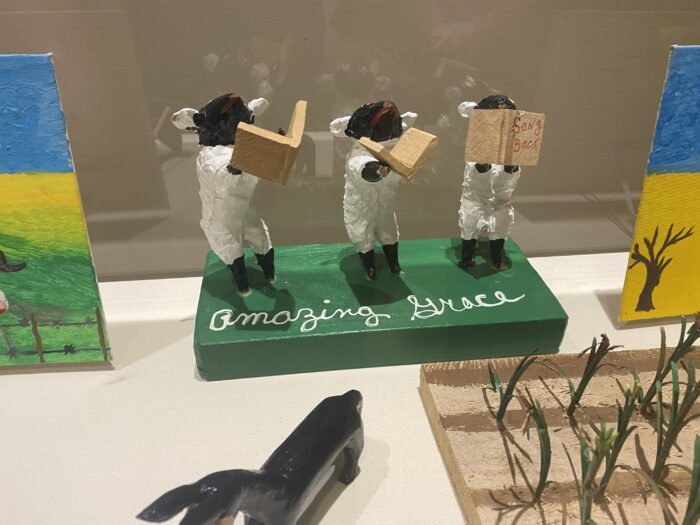
“It was kind of like that old program that used to be on TV in the 50’s, called ‘This is Your Life,’ Mike said. “It was kind of a tour of our creative life and it’s something to be remembered. We hope it’s going to continue to travel. There’s interest from other museums as well.”
Minnie’s artistic endeavors branched into other mediums, painting, ceramics, quilting and hand-blown glass, all decorated with her animal and human designs. Her works sell in the hundreds and thousands of dollars.
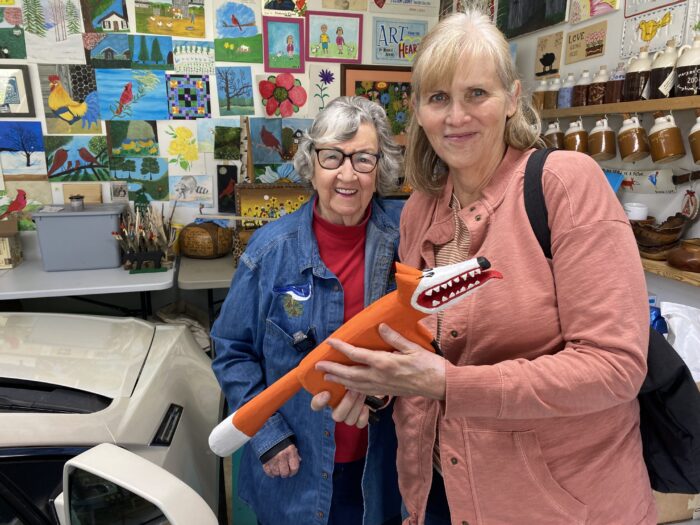
Minnie’s public recognition has come in landslides. Numerous distinguished American art awards, collegiate certificates of merit, an honorary doctorate, and the prestigious Kentucky Governor’s Artist Award for her contributions to art and artists.
Minnie says her faith teaches her that humility and helping others are the true rewards. She said she doesn’t understand what “Matriarch of Appalachian Folk Art” means – but maybe she does.
“What does matriarch mean?” Minnie said, chuckling. “I don’t want to be, you know, lifted up like I’m something because I’m not. The Bible teaches us our righteousness is as filthy rags. So that doesn’t say a lot for us that when we get to thinking we’re a goody two shoes. I feel like I just love to help somebody that wants to help themselves. But a lot of people think it’s too much work.”
Mike said simply that nobody has done it longer, done it more and done it better than Minnie Atkins.
“She’ll be 90 years old,” Mike said. “And she has not slowed down. She works six days a week. She’s got as much enthusiasm as she ever had. Minnie, just by the volume and the quality of her work, it just rises above the crowd. She’s been called the most important female woodcarver in America, and I don’t know whether I’d even put female in front of that or not.”
Right next to Minnie’s whittling chair sits a well worn, dogged eared, place mark-filled Bible. She said that book is her life’s manual for living, and she’s far from done. She had a stand pat answer for when she might retire from whittlin’.

“Until they put me underground if I’m able,” Minnie said. “I’ve been awfully blessed. I just can’t thank the good Lord enough for his blessings. That Bible, Martha Sluss and my sister in London, and somebody else bought me that Bible when I was 50 years old. And you see I’ve really worked with it.”